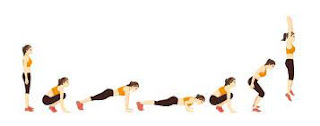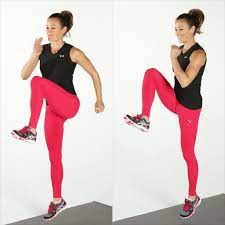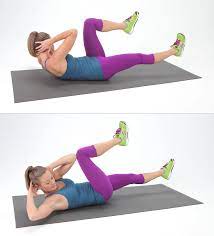Apple cider vinegar For Belly Fat:
 |
| Apple cider vinegar |
Apple cider vinegar (ACV) has gained popularity as a natural remedy for various health conditions, including weight loss. While it may have some potential benefits, it's important to note that no single ingredient or remedy can target fat loss in a specific area of the body, such as the belly. However, incorporating apple cider vinegar into a healthy lifestyle may support overall weight management. Here are some tips on how to use apple cider vinegar as part of a weight loss routine:
Choose the right type of apple cider vinegar: Look for raw, unfiltered, and organic ACV that contains the "mother." The mother is a cloudy substance made up of beneficial bacteria, enzymes, and proteins that contribute to ACV's potential health benefits.
Dilute before consumption: Apple cider vinegar is highly acidic, and consuming it undiluted can harm tooth enamel and irritate the digestive system. Mix 1-2 tablespoons of ACV with 8-10 ounces of water or herbal tea.
Start with small amounts: If you're new to ACV, begin with smaller amounts and gradually increase the dosage over time. Some people find it beneficial to start with 1 teaspoon and work their way up to 1-2 tablespoons per day.
Timing of consumption: It's generally recommended to consume apple cider vinegar before meals. Drinking it 15-30 minutes before a meal may help suppress appetite, increase feelings of fullness, and potentially reduce calorie intake.
Be consistent: Consistency is key when using apple cider vinegar for any potential benefits. Incorporate it into your daily routine and monitor how your body responds over time.
Combine with a healthy diet and exercise: While apple cider vinegar may have some effects on weight management, it should be used in conjunction with a balanced diet and regular physical activity. Focus on a nutrient-dense, whole-food diet and engage in a variety of exercises to support overall weight loss and a healthy lifestyle.
Be mindful of potential side effects: Some people may experience digestive discomfort, throat irritation, or other side effects when consuming apple cider vinegar. If you notice any adverse effects, discontinue use or consult a healthcare professional.
Remember, while apple cider vinegar may offer some potential benefits, there's no magic solution for spot reduction of belly fat. A holistic approach that includes a balanced diet, regular exercise, and healthy lifestyle choices is the most effective way to achieve and maintain a healthy weight.
What is a Belly Fat?
Belly fat, also known as abdominal or visceral fat, refers to the excess fat stored in the abdominal cavity. It is the fat that accumulates around the internal organs, such as the liver, pancreas, and intestines. Belly fat is often categorized into two types:
Subcutaneous fat: This is the fat located just beneath the skin and above the abdominal muscles. While subcutaneous fat can contribute to a protruding belly appearance, it is not as harmful to health as visceral fat.
Visceral fat: This is the deeper fat that surrounds the organs in the abdominal cavity. Visceral fat is metabolically active and can release hormones and chemicals that have negative effects on health. It is associated with an increased risk of various health conditions, including type 2 diabetes, heart disease, high blood pressure, certain cancers, and metabolic syndrome.
Belly fat can accumulate due to several factors, including poor diet, sedentary lifestyle, hormonal changes, genetics, and stress. Excess calorie intake, particularly from processed foods and sugary beverages, can contribute to the storage of fat in the abdominal area.
Reducing belly fat requires an overall approach to weight loss and healthy lifestyle habits. This includes following a balanced diet, engaging in regular physical activity, managing stress levels, getting adequate sleep, and avoiding excessive alcohol consumption. It's important to note that spot reduction, or targeting fat loss in a specific area of the body, is not possible. Instead, overall weight loss and body fat reduction can lead to a decrease in belly fat over time.
Apple cider vinegar Benefits
Apple cider vinegar (ACV) has been touted for its potential health benefits. While scientific research is still ongoing and more evidence is needed to fully support these claims, here are some potential benefits associated with apple cider vinegar:
Digestive health: ACV may aid digestion by increasing stomach acid production, which can help break down food and improve nutrient absorption. It may also help alleviate certain digestive issues like indigestion and bloating.
Blood sugar control: Some studies suggest that apple cider vinegar may help improve insulin sensitivity and lower blood sugar levels after meals. This could be beneficial for individuals with type 2 diabetes or insulin resistance. However, it's important to consult a healthcare professional before making any changes to diabetes management.
Weight management: ACV may contribute to weight loss or weight management by promoting feelings of fullness, reducing calorie intake, and potentially improving metabolism. However, it should be noted that any effects on weight loss are likely to be modest and should be combined with a healthy diet and regular exercise.
Heart health: Animal studies have shown that apple cider vinegar may help lower cholesterol and triglyceride levels. These effects, if replicated in human studies, could have potential benefits for heart health. However, more research is needed to confirm these findings.
Antimicrobial properties: ACV has antimicrobial properties that may help inhibit the growth of certain bacteria and fungi. It has been used traditionally as a natural remedy for skin infections, dandruff, and even as a cleaning agent.
Skin health: Some people use diluted apple cider vinegar as a natural toner or facial cleanser. It is believed to help balance the skin's pH, reduce acne, and improve overall skin appearance. However, it's essential to use it with caution and conduct a patch test to ensure it doesn't cause any adverse reactions.
It's worth noting that while apple cider vinegar may offer potential benefits, it's not a cure-all or a substitute for medical treatment. It's always advisable to consult a healthcare professional before incorporating any new supplements or remedies into your routine, especially if you have underlying health conditions or are taking medications.
Should you try the apple cider vinegar diet for weight loss?
The apple cider vinegar diet, also known as the ACV diet, is a weight loss approach that involves consuming apple cider vinegar as a central component of the diet. While some people claim that it can aid in weight loss, it's important to approach any diet or weight loss regimen with caution and consider the available evidence.
While there is limited scientific research specifically on the ACV diet, some studies have explored the potential weight loss benefits of apple cider vinegar. However, it's important to note that these studies have typically been small in scale and their results are not conclusive. The weight loss effects of apple cider vinegar, if any, are likely to be modest and vary among individuals.
Additionally, it's crucial to consider the potential risks and side effects associated with consuming apple cider vinegar in large quantities or undiluted form. ACV is highly acidic, and excessive consumption can lead to tooth enamel erosion, throat irritation, digestive discomfort, and even potentially interact with certain medications. It's important to dilute apple cider vinegar and consume it in moderation.
Rather than relying solely on the apple cider vinegar diet, it's generally more effective and sustainable to focus on overall healthy eating patterns and lifestyle habits. A balanced diet that includes a variety of whole foods, along with regular physical activity, is key to achieving and maintaining a healthy weight. It's always recommended to consult with a healthcare professional or registered dietitian before starting any new diet or weight loss plan to ensure it aligns with your individual needs and goals.
Is there a side-effects of the apple cider vinegar diet?
While apple cider vinegar (ACV) can have potential health benefits, it's important to be aware of the possible side effects associated with consuming it excessively or inappropriately. Here are some potential side effects of the apple cider vinegar diet:
Digestive issues: Consuming undiluted or excessive amounts of ACV may lead to digestive discomfort such as nausea, indigestion, and stomach upset. The high acidity of ACV can irritate the gastrointestinal tract, especially for individuals with sensitive stomachs or those prone to acid reflux.
Tooth enamel erosion: ACV is acidic, and when consumed in its undiluted form or in large quantities, it can erode tooth enamel over time. To protect your dental health, it's essential to dilute ACV and avoid direct contact with teeth. It's also advisable to rinse your mouth with water after consuming ACV and wait at least 30 minutes before brushing your teeth.
Throat irritation: The acidity of ACV can cause throat irritation or a burning sensation, particularly if consumed without dilution or if you have a sensitive throat.
Potential interactions with medications: ACV may interact with certain medications, including diuretics, insulin, and medications for diabetes and heart disease. It's important to consult a healthcare professional before incorporating ACV into your diet, especially if you take prescription medications.
Low potassium levels: Excessive consumption of ACV may lead to low potassium levels in the body (hypokalemia). This can be particularly problematic for individuals taking medications that already lower potassium levels, such as certain diuretics.
Delayed stomach emptying: In some cases, ACV may slow down the rate at which the stomach empties its contents (gastric emptying). While this may promote feelings of fullness and potentially aid in weight management, it can also cause discomfort, bloating, or interfere with the absorption of certain medications.
It's important to remember that individual experiences may vary, and not everyone will experience these side effects. However, it's advisable to consume ACV in moderation, diluted form, and be mindful of any adverse reactions. If you experience persistent or severe side effects, it's recommended to discontinue its use and consult a healthcare professional.
The science behind apple cider vinegar for weight loss
The scientific research on the effects of apple cider vinegar (ACV) specifically for weight loss is limited and not conclusive. While some studies have investigated the potential benefits of ACV, it's important to interpret the findings with caution. Here is an overview of the scientific evidence related to ACV and weight loss:
Appetite and calorie intake: Some small studies have suggested that consuming apple cider vinegar before a meal may lead to increased feelings of fullness and reduced calorie intake. This could potentially contribute to weight loss or weight management. However, the effects on appetite and calorie intake appear to be modest and may vary among individuals.
Blood sugar control: ACV has been studied for its potential impact on blood sugar levels. Some research indicates that consuming ACV with a high-carbohydrate meal may help improve insulin sensitivity and lower post-meal blood sugar spikes. Stable blood sugar levels can be beneficial for weight management, as blood sugar fluctuations can impact hunger and food cravings. However, more research is needed to fully understand the effects of ACV on blood sugar control and weight loss.
Metabolism and fat burning: Some animal studies have suggested that acetic acid, the main active compound in ACV, may help improve fat metabolism and reduce fat storage. However, these findings have not been consistently replicated in human studies, and more research is required to understand the specific effects of ACV on metabolism and fat burning in humans.
Overall weight loss: While some studies have shown potential benefits of ACV on appetite, calorie intake, and blood sugar control, it's important to note that the effects on overall weight loss are likely to be modest. There is no scientific evidence to support the idea that ACV alone can significantly and directly target belly fat or lead to substantial weight loss.
It's important to approach ACV as part of a holistic approach to weight loss, including a balanced diet, regular physical activity, and healthy lifestyle habits. Incorporating ACV into your routine may offer some potential benefits, but it should not be considered a magic solution for weight loss. It's always advisable to consult a healthcare professional before making any significant changes to your diet or weight loss plan.
How to add apple cider vinegar to your diet for weight loss?
If you want to incorporate apple cider vinegar (ACV) into your diet for potential weight loss benefits, here are some tips on how to do it:
Dilute it: ACV is highly acidic, so it's important to dilute it before consuming. Mix 1-2 tablespoons of ACV with 8-10 ounces of water or herbal tea. Start with smaller amounts and gradually increase the dosage if desired.
Timing of consumption: It's generally recommended to consume ACV before meals. Drinking it 15-30 minutes before a meal may help promote feelings of fullness and potentially reduce calorie intake. However, you can also spread out ACV consumption throughout the day if preferred.
Use it in dressings and marinades: Incorporate ACV into homemade dressings and marinades for salads, vegetables, and proteins. This can add flavor and provide a way to include ACV in your meals.
Mix it with other ingredients: Some people find the taste of ACV unpleasant on its own. You can mix it with other ingredients like honey, lemon juice, or a pinch of cinnamon to enhance the flavor. However, be mindful of the additional calories and sugar content if using sweeteners.
Be consistent: Consistency is key when using ACV or any dietary change for potential weight loss benefits. Incorporate it into your daily routine and monitor how your body responds over time.
Be aware of potential side effects: While ACV is generally safe for most people when consumed in moderation, be mindful of any adverse effects you may experience. Discontinue use if you notice any digestive discomfort, throat irritation, or other side effects, and consult a healthcare professional if needed.
Remember, incorporating ACV into your diet is just one aspect of a comprehensive weight loss plan. It should be combined with a balanced diet, regular exercise, and healthy lifestyle habits to achieve sustainable weight loss. Individual results may vary, so it's important to listen to your body and consult a healthcare professional for personalized advice.
What Are the Types of Apple Cider Vinegar?
There are primarily two types of apple cider vinegar (ACV) available:
Filtered/Refined Apple Cider Vinegar: This type of ACV undergoes a filtration process to remove the "mother." The mother is a cloudy substance composed of beneficial bacteria, enzymes, and proteins that can provide potential health benefits. Filtered ACV has a clear appearance and a milder flavor compared to unfiltered ACV. While filtered ACV may still have some health benefits, it lacks the potential benefits associated with the mother.
Unfiltered/Raw Apple Cider Vinegar: Unfiltered ACV retains the "mother" and is considered to be the less processed and more natural form of ACV. It has a cloudy appearance due to the presence of the mother and may contain sediment settled at the bottom of the bottle. Unfiltered ACV has a stronger and more pungent flavor compared to filtered ACV. Many people prefer unfiltered ACV because it is believed to contain more beneficial compounds.
Both filtered and unfiltered ACV can be used for various purposes, including culinary applications, home remedies, and personal care routines. When choosing ACV, it's often recommended to opt for organic and unpasteurized varieties to ensure it is made from high-quality apples and retains its potential health benefits.
It's worth noting that there may be variations in ACV brands and production methods, which can impact the flavor and quality of the vinegar. It's always a good idea to read labels and choose a reputable brand that aligns with your preferences and requirements.
What Are Other Uses for Apple Cider Vinegar?
Apple cider vinegar (ACV) has a wide range of uses beyond culinary applications. Here are some common alternative uses for ACV:
Household cleaner: ACV can be used as a natural household cleaner due to its antimicrobial properties. Mix equal parts of ACV and water in a spray bottle and use it to clean surfaces like countertops, windows, and mirrors.
Hair rinse: ACV can be used as a hair rinse to help restore the pH balance of the scalp, remove buildup from styling products, and add shine to hair. Mix 1-2 tablespoons of ACV with water and use it as a final rinse after shampooing.
Skin toner: Diluted ACV can be used as a facial toner to help balance the skin's pH, tighten pores, and reduce acne breakouts. Mix 1 part ACV with 2-3 parts water and apply it to the face using a cotton pad.
Sunburn relief: ACV can provide temporary relief for sunburned skin. Add a cup of ACV to a lukewarm bath and soak for 15-20 minutes to soothe the skin.
Weed killer: ACV can be used as an organic weed killer. Spray undiluted ACV directly onto weeds or unwanted vegetation to help kill them naturally. However, be careful not to spray it on plants you want to keep, as ACV can be harmful to them as well.
Food preservation: ACV has been traditionally used for preserving and pickling foods due to its acidic nature. It can help prevent the growth of harmful bacteria and extend the shelf life of certain foods.
It's important to note that while ACV has various potential uses, it may not be suitable for everyone or every situation. It's recommended to conduct a patch test and consult appropriate resources or professionals before using ACV for non-culinary purposes.
What Are the Dosages for Apple Cider Vinegar?
The appropriate dosage of apple cider vinegar (ACV) can vary depending on the intended use and individual factors. Here are some general guidelines for ACV dosages:
Internal consumption: When consuming ACV orally, it's generally recommended to start with a low dosage and gradually increase it if tolerated. A common starting dosage is 1-2 tablespoons (15-30 ml) of ACV diluted in 8-10 ounces (240-300 ml) of water or herbal tea. This can be taken once or twice a day, preferably before meals.
Hair and skin applications: For hair rinses or skin toner, dilute ACV with water in a 1:2 or 1:3 ratio. For example, mix 1 part ACV with 2-3 parts water and adjust the ratio based on your preference and sensitivity.
It's important to note that ACV is highly acidic, and consuming excessive amounts or using undiluted ACV can have adverse effects on health, including tooth enamel erosion, throat irritation, and digestive discomfort. It's recommended to use ACV in moderation and be mindful of your body's response.
Individuals with specific health conditions or on certain medications should consult a healthcare professional before using ACV. For example, individuals with diabetes or gastrointestinal issues may require special consideration.
It's also important to choose high-quality ACV, preferably organic and unpasteurized, as it may retain more beneficial compounds compared to processed varieties.
Remember, these dosages are general recommendations, and individual responses may vary. It's always advisable to listen to your body, start with lower doses, and consult a healthcare professional or registered dietitian for personalized advice based on your specific needs and circumstances.
Conclusion
In conclusion, apple cider vinegar (ACV) has gained popularity for its potential health benefits, including its possible role in weight loss. However, the scientific evidence supporting the use of ACV for weight loss is limited and not conclusive. While some studies suggest that ACV may have modest effects on appetite, calorie intake, and blood sugar control, its overall impact on weight loss is likely to be modest and can vary among individuals.
When incorporating ACV into your diet, it's important to dilute it before consuming and start with smaller amounts to assess your tolerance. ACV should be used in moderation, as excessive consumption or undiluted use can lead to side effects such as digestive discomfort, tooth enamel erosion, and throat irritation. It's advisable to consult a healthcare professional before making significant changes to your diet or using ACV, particularly if you have underlying health conditions or take medications.
Beyond its potential use for weight loss, ACV has other alternative uses, such as a household cleaner, hair rinse, skin toner, and food preservative. However, it's important to be aware of proper dilution and precautions when using ACV for non-culinary purposes.
In summary, while ACV may have some potential benefits, it should be seen as part of an overall healthy lifestyle that includes a balanced diet, regular physical activity, and other evidence-based weight loss strategies. It's always recommended to consult with a healthcare professional or registered dietitian for personalized advice and guidance on weight loss and incorporating ACV into your diet.














